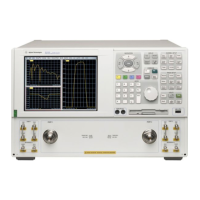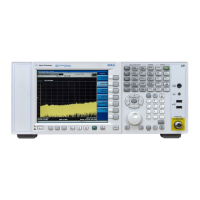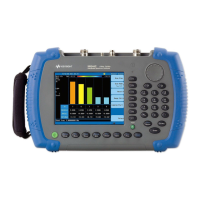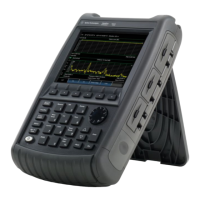244 Chapter 3
Mode
Distance To Fault
Mode
of your data. The results will still reflect the true number of data points
that you specified.
Measured Distance - the Effects of Frequency and Points
It is not always obvious how frequency range affects measured distance and resolution,
and it often appears to be the opposite of what you would expect. If you are new to making
Distance to Fault measurements, this section will help clarify what is happening.
In the following equations
The Speed of Light (‘c’) in a vacuum is a constant value of 3e+8 m/s.
Your test cable’s transmission speed (relative to light) is VRel
The Measured Distance (in meters) of the DTF measurement is determined by the
following equation:
Measured distance (in meters) = (1/4 * Number of points * c * VRel) / Freq. Span
You can see from this equation that:
To increase the measured distance:
• you can increase the number of points, or
• you can reduce the frequency span.
To reduce the measured distance:
• you can reduce the number of points, or
• you can increase the frequency span.
Resolution - the Effects of Frequency and Points
It is not always obvious how frequency range affects measured distance and resolution,
and it often appears to be counter-intuitive. If you are new to making Distance to Fault
measurements, this section will help clarify what is happening.
Resolution Distance (in meters) of the DTF measurement, that is, the shortest distance
between two faults that can still be resolved by the analyzer, is determined by the
following equation:
Mode Stimulus / Response
Preset 256
Range 256 | 512 | 1024
Key Path
Meas Setup, FFT Size
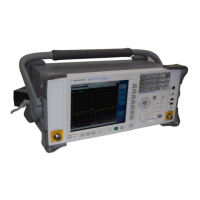
